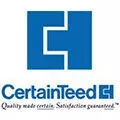Your Sacramento-area home’s insulation can lower cooling and heating costs substantially. That saves money and energy but also enhances your comfort level indoors. If you’re building new or considering insulation replacement this year, knowledge-based decisions can make a difference.
Understanding how insulation works means understanding heat flow and R-values.
Understanding Heat Flow and R-Values
Heat flow throughout your home is driven by three mechanisms:
- Conduction: The way heat moves through certain materials
- Convection:The way heat circulates through liquids and gases (why warm air rises)
- Radiation: The way heat travels on a straight path
Regardless of the material and the mechanism, heat flows from warm spaces to cooler ones until the temperature is stabilized. In a winter chill, heat will flow from your warmer ground floor into your attic. During warm weather, heat will flow from outside to inside. Heating and cooling systems regulate the temperature and comfort. And insulation manages heat flow by providing resistance.
R-value is a rating system for the way insulation manages the heat flow. It’s based on the material, thickness and density. Insulation with a higher R-value is better. When it comes to insulation, you’d think “more is better,” too, so many people opt to add insulation. But a lot depends on the materials involved; some loose-fill insulation may actually compress when another insulation is added. This can result in an unchanged R-value or less airflow management.
If your older insulation is water-damaged or defective, replacement may be your best option. Ultimately, seek professional insulation retrofit or removal and replacement services.
Retrofit Insulation: Good Choices, Better Brands
Attic insulation is probably the top insulation project we have here in North Central California. And the two choices are usually fiberglass batts and blown-in or cellulose blown-in. Lofts are one design trend for new homes that’s here to stay.
- Loft insulation requires professional installation.
- Air-sealing and knee walls are two primary attic insulation targets.
Fiberglass Insulation
Fiberglass insulation can be pre-cut batts and rolls or blown-in loose-fill. Fiberglass offers excellent thermal properties, but it’s also more architecturally design-friendly. CertainTeed® and Owens Corning Pink Fiberglas™ are reliable, safe and affordable brands.
Cellulose Insulation
Cellulose insulation offers many benefits:
- Better heat flow resistance than fiberglass
- Easier to install
- Environmentally better (low-energy manufacturing/short-haul transportation)
- Exceptional fire/moisture resistance
- Superior noise reduction
Green Fiber is a trusted brand for cellulose blown-in insulation.
Other Insulation Types
- Radiant barrier: Fi-Foil radiant barrier insulation reflects rather than absorbs sunlight.
- Recycled denim: UltraTouch™ is an evolutionary insulation material that requires no warning labels. It also meets the most rigorous testing standards for fire, smoke and fungi resistance.
- Rigid board: Dow® is a brand homeowners trust for sustainable alternatives. Commercial building contractors often favor DuPont™ Thermax™ exterior insulation.
- Spray foam: Dow insulation is energy-efficient and great for air-sealing homes. Demilec is closed-cell spray insulation with superior air, water and vapor barrier properties.
Crawl Space, Garage, Subfloor and Wall Insulation
Have you ever wondered why we don’t have basements in California? Some say earthquakes, but when built to code, a California basement is safe. The most likely reason is that we’re below sea level, and flooding would be an issue.
Crawl spaces work better for California residents, and they’re cheaper to build. They’re also magnets for moisture and bugs. Crawl space insulation prevents unwanted pests and blocks air loss.
Insulating the garage or even the garage door alone can cut down on warm, outside air seeping in. And if a family member is using it to work on a project that requires power tools, garage insulation can provide excellent soundproofing.
Subfloor insulation can use various materials and will help your cooling and heating system maximize energy efficiency. Walls are also a major source of energy loss. Wall insulation is needed inside and out California commercial and residential properties.
Gold Star Insulation Saves Money
In addition to reducing energy loss (and monthly bills), federal tax credits are another insulation incentive. Insulation is an investment in your home that pays off quickly.
Call 916-229-8445 or contact us for more information.


















